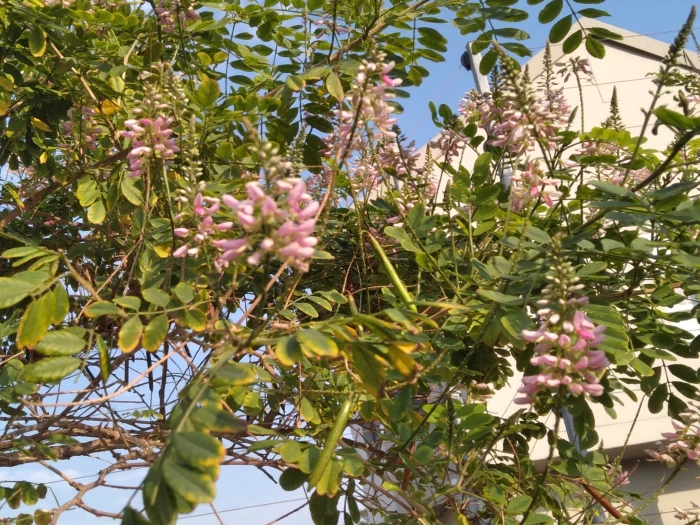River Indigo
(Indigofera jucunda)
River Indigo (Indigofera jucunda)
/
/

© Rosemary Harrison
CC BY-SA 4.0
Image By:
© Rosemary Harrison
Recorded By:
Copyright:
CC BY-SA 4.0
Copyright Notice:
Photo by: © Rosemary Harrison | License Type: CC BY-SA 4.0 | License URL: http://creativecommons.org/licenses/by-sa/4.0/ | Uploader: rosemary_harrison | Publisher: iNaturalist |
























Estimated Native Range
Climate Requirements for Southaven, Mississippi
| This Plant | Your Site | Plant Suitability for Your Location | ||
|---|---|---|---|---|
| • Precipitation | 17" - 43" | 54" | Aquatic | Aquatic |
| • High Temp. | 77°F - 90°F | 91°F | Your summers may be too hot for this plant. | Too hot |
| • Low Temp. | 33°F - 55°F | 30°F | Your winter temperatures may be too cold for this plant | Too cold |
This plant may not grow well at your location - your precipitation is too high.
Summary
Indigofera jucunda, commonly known as River Indigo, Natal Indigo, or Pink Indigo, is a deciduous shrub native to the forest margins, thickets, and rocky outcrops of Southern Africa, particularly within the Eastern Cape and KwaZulu-Natal provinces. It exhibits a moderate growth rate, reaching a typical height and width of 4-6 feet (1.2-1.8 meters). The plant is characterized by its compound leaves and dense clusters of pink, pea-like flowers that are quite showy and bloom profusely from late spring to summer, attracting pollinators. The foliage is bright green, adding to the plant’s ornamental value.
River Indigo is valued for its attractive flowers and ability to adapt to various garden settings. It is used in borders, as a specimen plant, or for informal hedging. It is relatively easy to maintain, requiring medium amounts of water and thriving in a range of soil types, including clay, loam, and sandy soils, provided they have medium drainage. It prefers full sun to part shade, which encourages the best flowering. While generally pest-free, it can occasionally suffer from fungal diseases in overly moist conditions. River Indigo is not known for being invasive but should be monitored as it can self-seed in ideal conditions.CC BY-SA 4.0
River Indigo is valued for its attractive flowers and ability to adapt to various garden settings. It is used in borders, as a specimen plant, or for informal hedging. It is relatively easy to maintain, requiring medium amounts of water and thriving in a range of soil types, including clay, loam, and sandy soils, provided they have medium drainage. It prefers full sun to part shade, which encourages the best flowering. While generally pest-free, it can occasionally suffer from fungal diseases in overly moist conditions. River Indigo is not known for being invasive but should be monitored as it can self-seed in ideal conditions.CC BY-SA 4.0
Plant Description
- Plant Type: Shrub
- Height: 4-6 feet
- Width: 3-6 feet
- Growth Rate: Moderate
- Flower Color: Cream, Pink
- Flowering Season: Spring, Summer
- Leaf Retention: Deciduous
Growth Requirements
- Sun: Full Sun, Part Shade
- Water: Medium
- Drainage: Medium
Common Uses
Border Plant, Butterfly Garden, Fragrant, Low Maintenance, Potted Plant, Showy Flowers
Natural Habitat
Forest margins, thickets, and rocky outcrops within the Eastern Cape and KwaZulu-Natal provinces of Southern Africa
Other Names
Common Names: Natal Indigo, Pink Indigo
Scientific Names: Indigofera jucunda, Indigofera cylindrica
GBIF Accepted Name: Indigofera jucunda